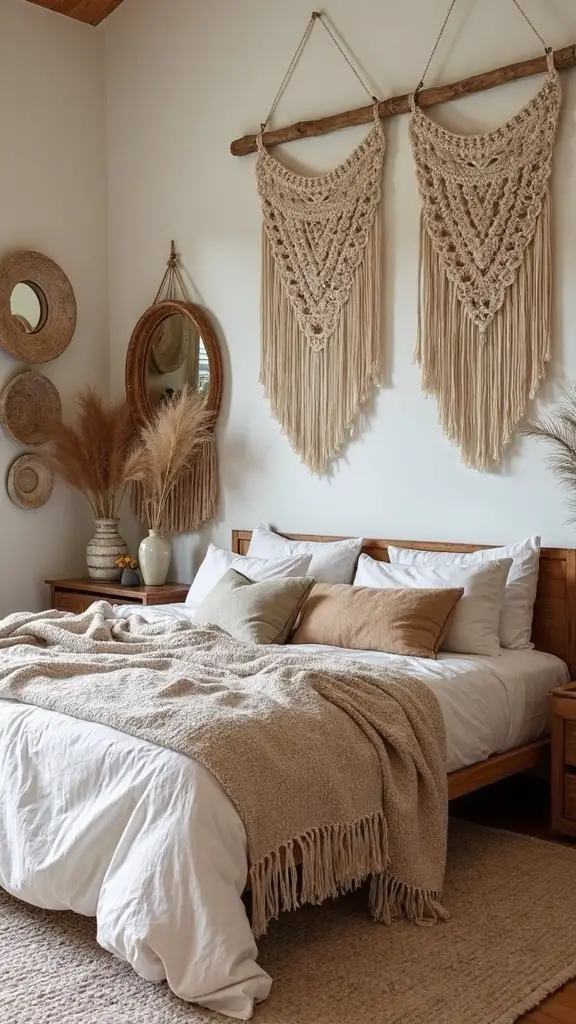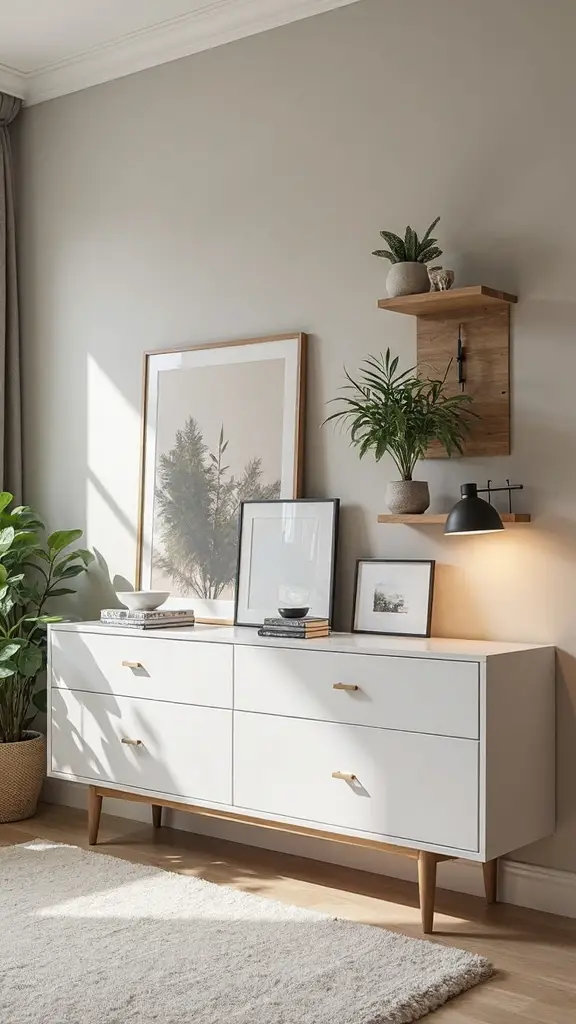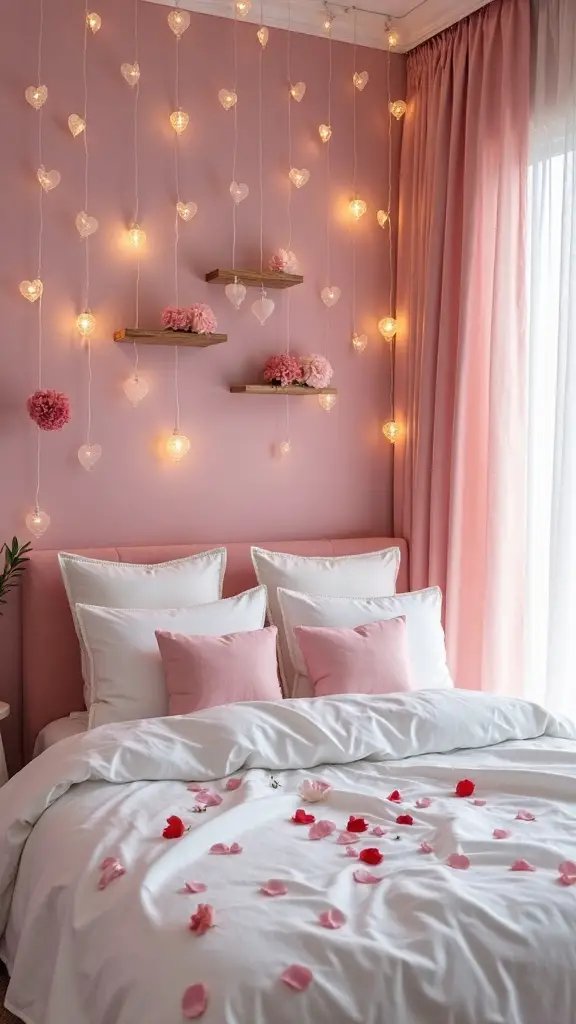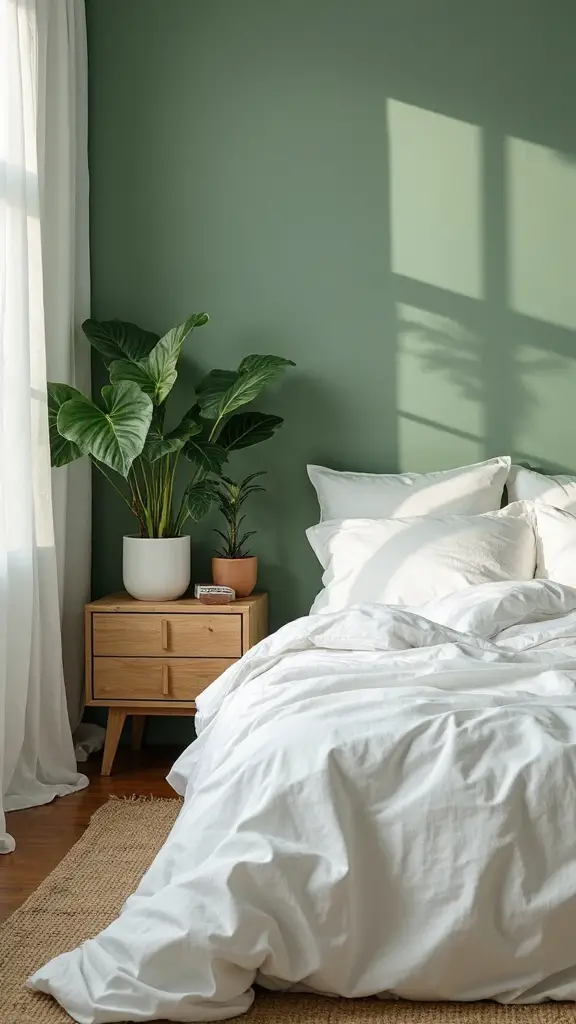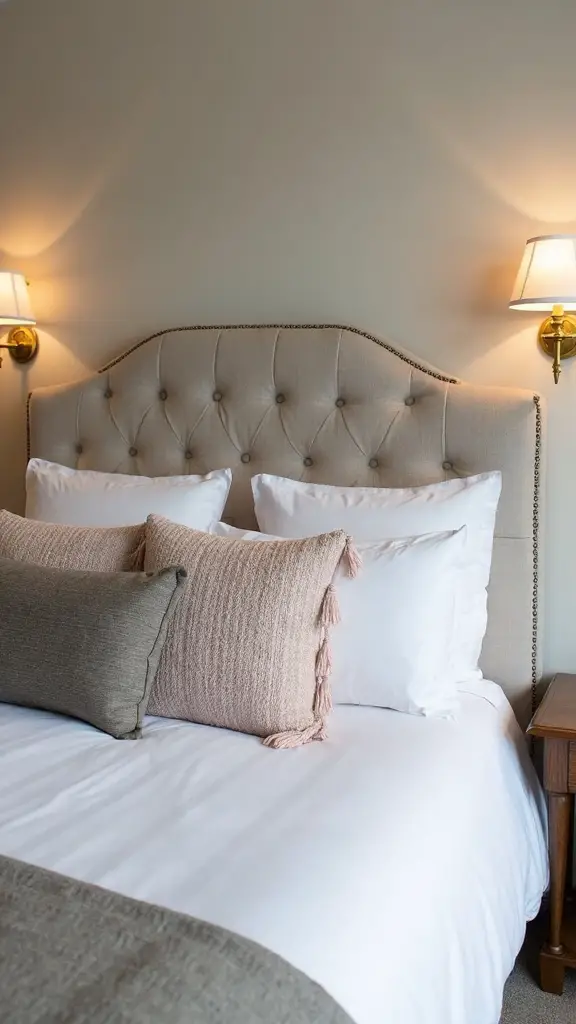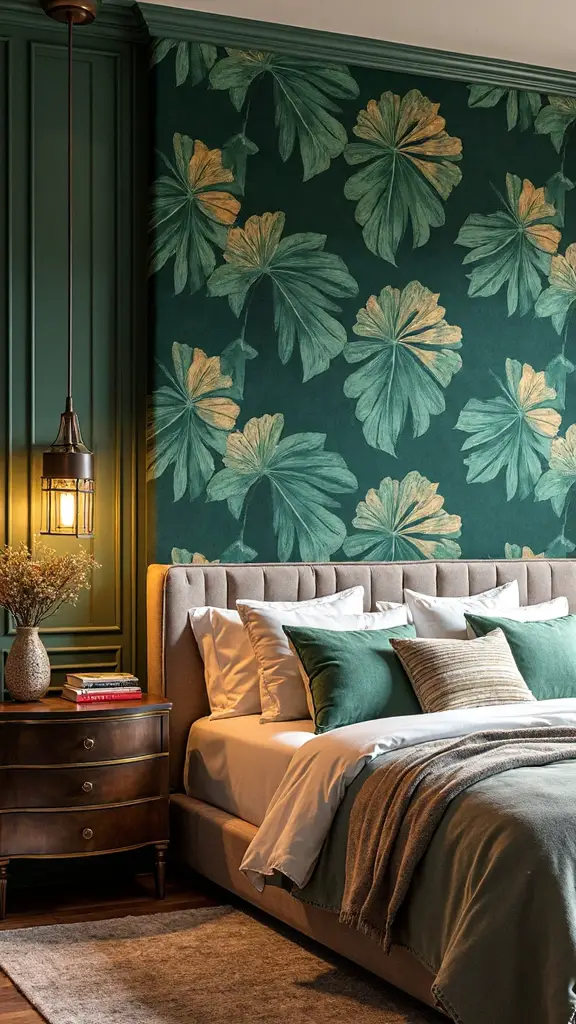How to Match Bedroom Wallpaper With Furniture and Lighting
Discover the secret formula for perfectly coordinating bedroom wallpaper with furniture and lighting—but one wrong move could ruin everything.
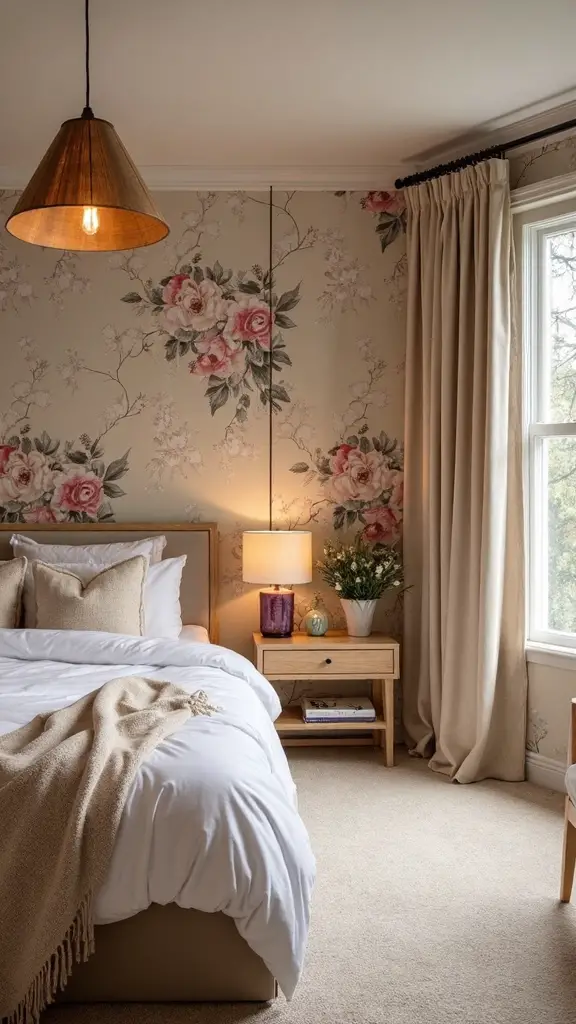
You’re standing in your bedroom, staring at blank walls and wondering how to create a cohesive design that doesn’t clash or feel chaotic. Matching wallpaper with your existing furniture and lighting isn’t just about picking pretty patterns—it’s about understanding how color temperature, visual weight, and scale work together to alter your space. The secret lies in knowing which combinations create harmony versus those that compete for attention, and there’s a systematic approach that’ll save you from costly mistakes.
Understanding Color Temperature and Its Impact on Room Harmony
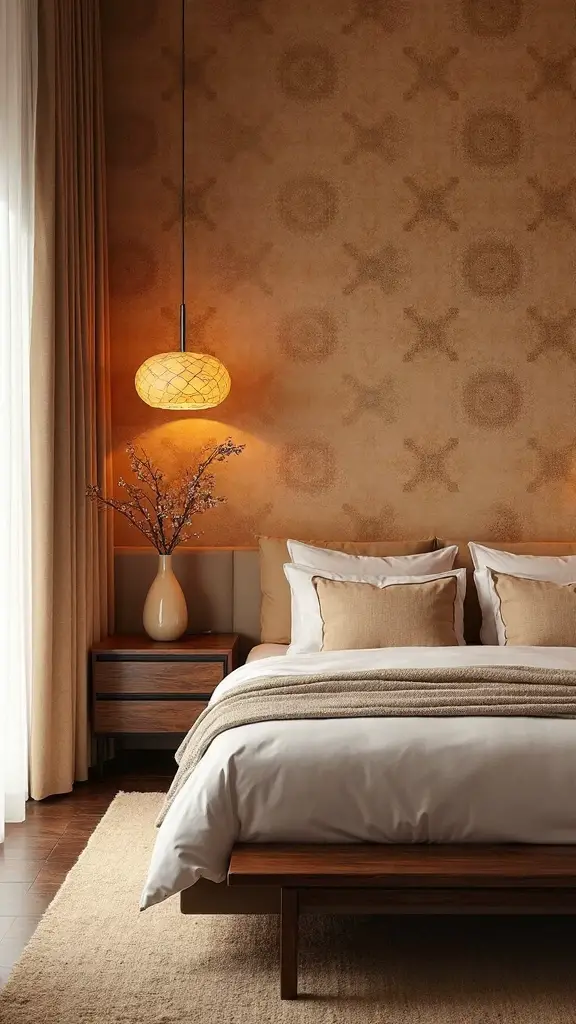
Before you select your bedroom wallpaper, you’ll need to understand how color temperature affects the overall harmony between your walls, furniture, and lighting fixtures. Warm colors (reds, oranges, yellows) create cozy atmospheres, while cool colors (blues, greens, purples) promote relaxation and tranquility.
Consider your lighting’s Kelvin rating when choosing wallpaper patterns. Warm white bulbs (2700K-3000K) enhance complementary color schemes with amber undertones, making warm wallpapers appear richer. Cool white lights (4000K-5000K) brighten cool-toned designs effectively.
Match your furniture’s wood tones or metal finishes to your wallpaper’s temperature for cohesive mood setting light qualities throughout your space.
Choosing the Right Scale and Pattern for Your Space Size
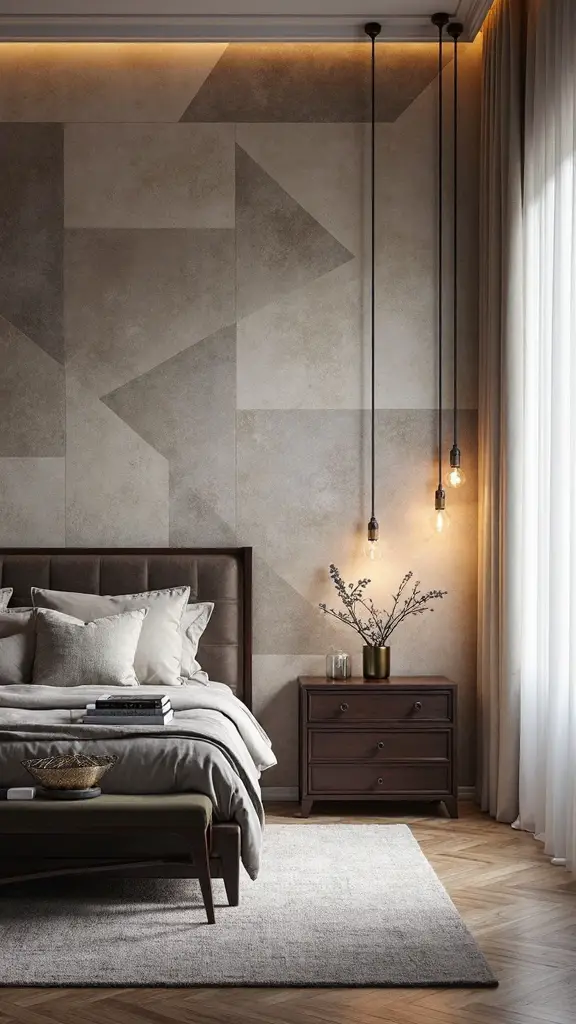
When selecting wallpaper patterns, the size of your bedroom directly influences which designs will enhance rather than overwhelm your space. Large-scale patterns work beautifully in spacious rooms but can make smaller bedrooms feel cramped and busy. You’ll want to choose medium to small patterns for compact spaces to maintain visual balance.
Consider wallpaper scale proportion carefully—bold geometric designs require adequate wall space to showcase their full impact. Small floral or subtle textured patterns create pattern visual interest without dominating tight quarters. Remember that busy patterns can clash with detailed furniture, so balance intricate wallpaper with simpler furnishings for harmonious results.
Balancing Visual Weight Between Wallpaper and Furniture Pieces
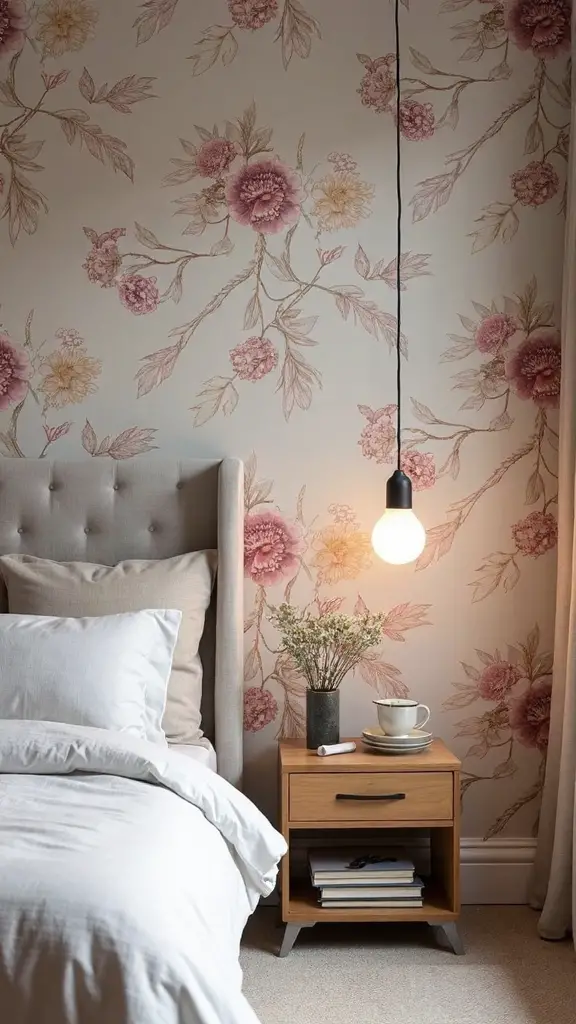
Visual weight determines how much attention each element in your bedroom commands, and achieving proper balance prevents any single piece from overpowering your space. When balancing visual proportions, pair bold, large-scale wallpaper patterns with simpler furniture pieces to avoid competing focal points.
Heavy wooden furniture works well with subtle, textured wallpapers that won’t overwhelm the room’s visual hierarchy.
Conversely, if you’ve chosen delicate furniture pieces, you can introduce more dramatic wallpaper designs without creating imbalance. The key to integrating wallpaper scale successfully lies in ensuring one element dominates while others provide supporting visual interest throughout your bedroom.
Coordinating Wood Tones and Metal Finishes Across Elements
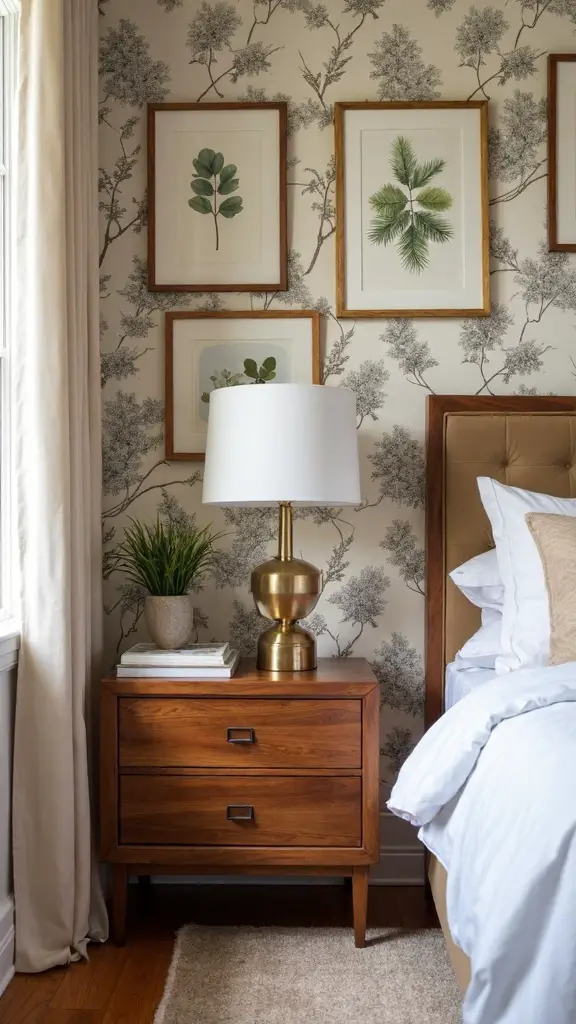
Although wood tones and metal finishes might seem like separate design considerations, they work together to create visual harmony throughout your bedroom’s wallpaper, furniture, and lighting scheme.
You’ll want to identify your dominant wood tone first—whether it’s warm oak or cool maple—then select complementary wood grains that enhance rather than compete with each other.
When harmonizing metal finishes, stick to two maximum: brass with black iron or chrome with brushed nickel.
Your wallpaper should bridge these elements, incorporating subtle metallic accents or wood-inspired textures that tie everything together seamlessly.
Using Lighting to Enhance Wallpaper Textures and Patterns
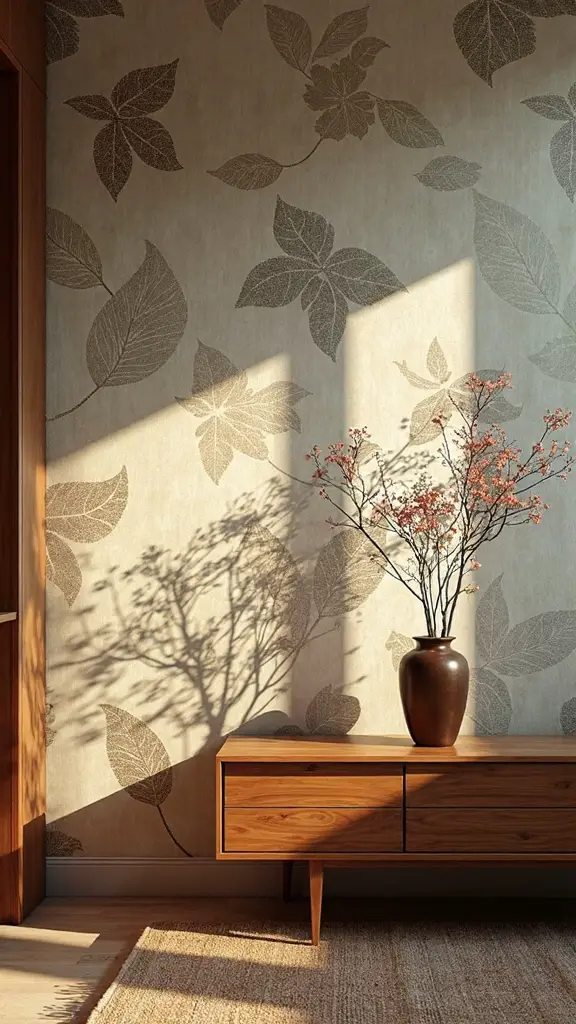
Strategic lighting placement alters your wallpaper from a flat backdrop into a lively focal point that adds depth and visual interest to your bedroom design. Wall sconces positioned 18 inches from textured wallpaper create dramatic shadows that emphasize surface variations.
Track lighting angled at 30 degrees works perfectly for highlighting wallpaper accents like metallic details or raised patterns. Table lamps with warm bulbs complement botanical prints, while cool LED strips enhance geometric designs. Dimmer switches let you adjust intensity throughout the day, altering your wallpaper’s appearance.
Remember that enhancing wallpaper depth requires experimenting with different light angles and temperatures.
Creating Focal Points Without Overwhelming the Design
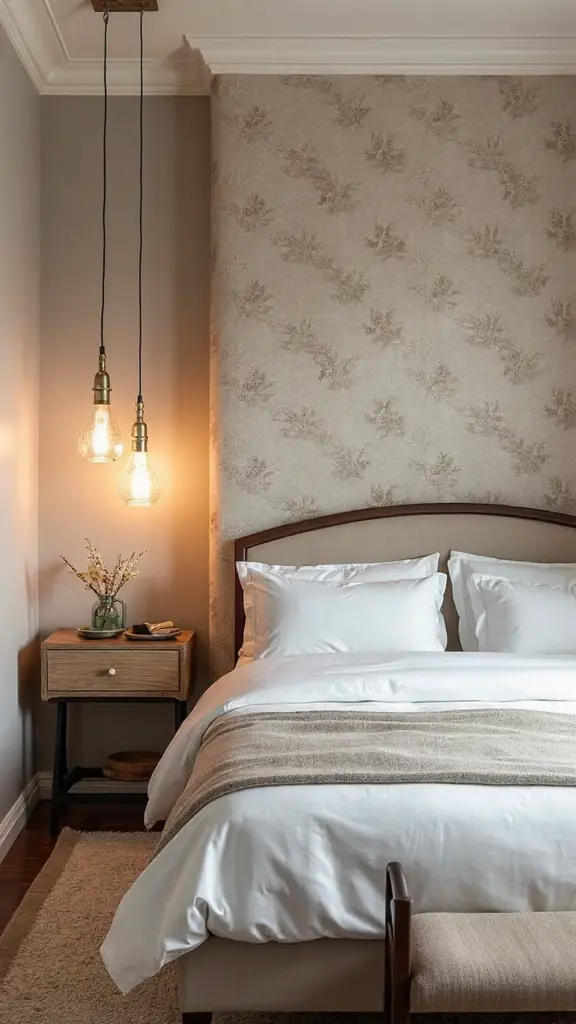
Successful bedroom designs often balance bold wallpaper statements with restrained furniture choices to create harmonious visual hierarchies. When choosing focal points, select one dominant element—either striking wallpaper or a statement headboard—to anchor your design.
You’ll prevent visual chaos by limiting pattern mixing to two complementary designs maximum. Consider placing textured wallpaper behind your bed while keeping adjacent walls neutral. This approach draws attention without overwhelming your senses.
Balance ornate wallpaper with simple furniture silhouettes, or pair geometric patterns with curved lighting fixtures. Remember, restraint creates sophistication—let each design element breathe rather than competing for attention throughout your space.
Mixing Bold and Neutral Elements for Perfect Balance
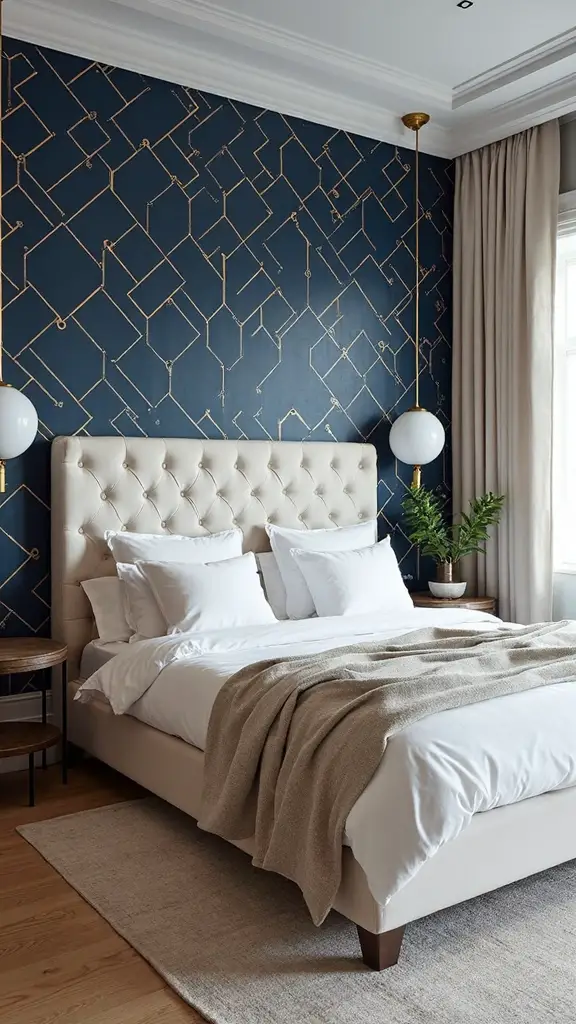
Building on this foundation of visual restraint, you’ll achieve the most sophisticated bedroom designs by commanding the art of bold-neutral pairings. Start with neutral wallpaper featuring subtle geometric patterns, then introduce bold accent furniture like a deep emerald velvet chair or rich navy nightstands.
Playing with contrast creates visual interest without chaos—pair dramatic lighting fixtures with soft, muted wall treatments. Balance bold wallpaper by selecting understated furniture in natural wood tones or cream upholstery. Focus on accentuating natural textures through woven baskets, linen curtains, and wooden frames that ground bolder design elements throughout your space.
Practical Tips for Testing Combinations Before Committing
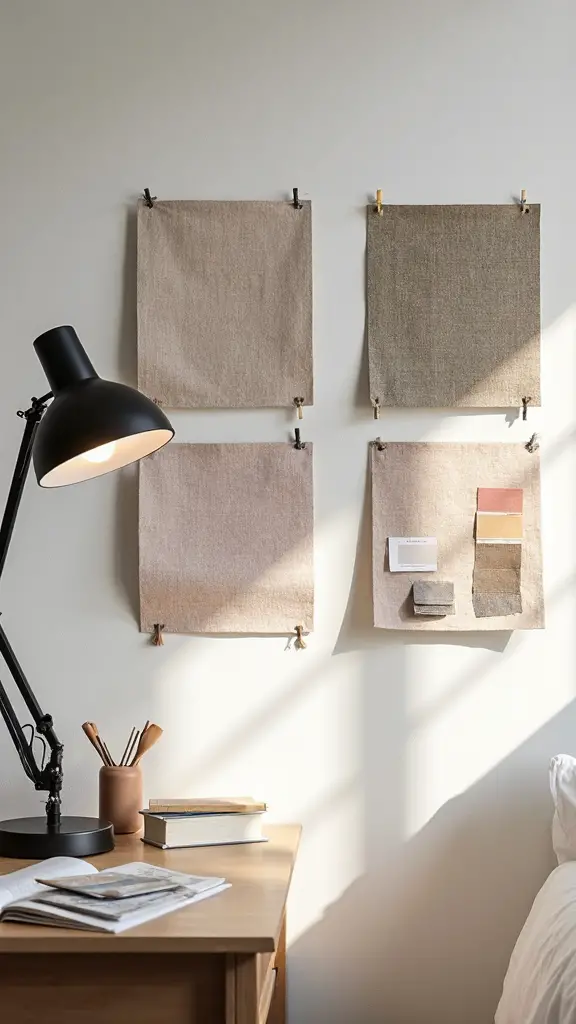
Why rush into permanent design decisions when you can test your wallpaper, furniture, and lighting combinations with simple preview techniques? Start by ordering large wallpaper samples and positioning them against your existing furniture under different lighting conditions throughout the day. Take photos to evaluate how natural and artificial light affects the overall aesthetic.
Create a mood board with fabric swatches, paint chips, and wallpaper samples to visualize the complete room design. Previewing color combinations helps you identify potential clashes before installation. Focus on sampling wallpaper textures alongside your furniture materials to guarantee they complement rather than compete with each other.
Conclusion
You’ve now got the essential knowledge to alter your bedroom into a beautifully coordinated space. Start by testing small wallpaper samples against your existing furniture and lighting conditions. Take your time making decisions, and don’t rush the process. Remember that successful design comes from balancing color temperature, scale, and visual weight thoughtfully. Trust your instincts, and you’ll create a harmonious bedroom that reflects your personal style perfectly.
